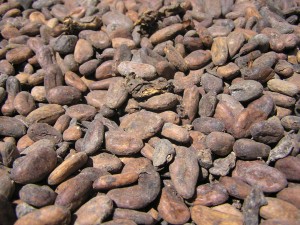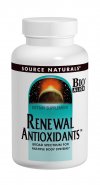|
Search Term: " Hazelnut "
Magnesium and vitamin D: The perfect pair?
Date:
April 24, 2019 01:49 PM
The presence of magnesium is absolutely imperative in maintaining stable levels of vitamin D. When someone does not have enough magnesium in their system, the metabolic pathway, disabling your body's ability to synthesize vitamin D. Taking magnesium does not have to be done in supplement form. If you ingest foods such as buckwheat, Brazil nuts, and hazelnuts, you can naturally boost your levels of magnesium and aid your body in synthesizing adequate levels of vitamin D throughout your system. Key Takeaways:
"Carried out by researchers from the Vanderbilt-Ingram Cancer Center, the study looked at whether supplementation with magnesium would affect vitamin D metabolism." Read more: https://www.naturalnews.com/2019-03-05-magnesium-and-vitamin-d-the-perfect-pair.html
(https://vitanetonline.com:443/forums/Index.cfm?CFApp=1&Message_ID=6171) The Best Keto Fiber Foods & Why You Need Them
Date:
April 18, 2019 01:43 PM
The Keto diet is well-known for emphasizing the value of healthy fats, but that doesn't mean it neglects the importance of fiber. It is not uncommon for those transitioning to the low-carb, high fat Keto diet to experience problems with digestion. The solution is to consume high fiber foods that keep you in a state of ketosis. These include non-starchy vegetables (e.g., cabbage and asparagus) as well as seeds and nuts. Keto fiber supplements - such as Gum arabic and Chia seeds - can also serve to maintain digestive regularity. Key Takeaways:
"Eighty percent of your total daily calories should be coming from foods like olive oil, coconut oil, grass-fed butter, nuts and seeds." Read more: https://draxe.com/best-keto-fiber-foods/
(https://vitanetonline.com:443/forums/Index.cfm?CFApp=1&Message_ID=6139) Regular consumption of nuts may improve male fertility
Date:
July 05, 2018 05:54 PM
A new study has discovered that men that incorporate nuts into their diet can boost their male fertility. The study, which followed nearly 120 young men, found that those in the study group that regularly ate nuts that included walnuts, almonds, and hazelnuts experienced enhanced mobility and vitality as well as higher sperm counts. At the same time, the nut consumers were found to have lower levels of sperm DNA fragmentation, which can lead to infertility. More studies will be needed to make a solid connection between nuts and male fertility. Key Takeaways:
"The study participants who consistently consumed nuts showed notable improvements in the vitality, mobility, morphology, and the number of their sperm – factors that are all associated with male fertility." Read more: https://www.earth.com/news/nuts-improve-male-fertility/
(https://vitanetonline.com:443/forums/Index.cfm?CFApp=1&Message_ID=5656) The health benefits of nut butters
Date:
April 28, 2017 09:29 PM
Nut butters, peanut butter and it's alternatives, can be delicious, healthy and full of protein. Each nut used has unique nutrients and flavors.peanut butter is packed with protein perfect for an after workout recovery snack, almond butter protects against heart disease, diabetes and stroke, cashew butter, though more expensive, improves your metabolism and immunity while hazelnut butter is high in folate that supports healthy pregnancy as well as healthy aging and decreased levels of anxiety. Read more: The health benefits of nut butters
(https://vitanetonline.com:443/forums/Index.cfm?CFApp=1&Message_ID=4498) Importance of Antioxidants and How Can We Get Them from Various Foods
Date:
December 18, 2015 04:29 AM
Antioxidants, also known as anti-oxidation agents, are nutrients that help reduce the harmful effects of oxidants in the body. We all know that our body cells need oxygen for energy and growth. As our body cells use oxygen to create energy and sustain life, free radicals are released in the process as a byproduct. Antioxidants help combat the damage caused by oxidation. If you have ever left a slice of apple in open air, you must have seen that after some time the flesh of the fruit turns brown. This is a result of oxidation. However, if you apply a little lemon juice on the slice, and then leave it in open air, the apple slice will remain white. This is because of the antioxidant present in lemon juice. Similarly, the antioxidants present in the food we consume do the same thing, neutralizes the free radicals, and thus keeps our cells protected. Studies have proven that people who consume antioxidant-rich food are at lower risk of developing many diseases, including cancer. Thus, it is very important for you to include these important nutrients in your everyday diet. Foods Rich in AntioxidantsThese important nutrients exist in many foods, and you can easily get them through a well-balanced diet. Nutrients having antioxidant benefits include vitamin C, vitamin E, selenium, beta-carotene, and manganese. A large group of phytochemicals also works as antioxidants.
One of the richest sources of vitamin C is sweet red peppers, and one single cup of these peppers can provide you 190 mg or 200 percent of your required daily intake. You can enjoy 100 percent of your daily intake from a single cup of green peppers, orange juice, Brussels sprouts, and broccoli. One cup serving of cauliflower, cantaloupe, tomatoes, grapefruit, blackberries, and raspberries offers 32 percent of women’s and 25 percent of men’s suggested daily intake.
The richest source of vitamin E includes Hazelnuts, almonds, sunflower seeds, pinto beans, peanuts, and vegetable oils like canola, corn, and safflower oil. 1 cup of cooked beans, 1-tablespoon vegetable oil and a one-ounce serving of seeds and nuts, offers 2 – 7 mg of vitamin E. These make 13 to 47 percent of your suggested daily intake. Certain vitamin C rich foods also fulfill 10 percent of your daily-required intake of vitamin E including blackberries, raspberries, broccoli, tomatoes, and sweet peppers.
Phytochemical antioxidants like carotenoids, resveratrol, and flavonoids can easily be identified because of the pigments they offer to the vegetables and fruits, like orange, red, yellow, purple and blue colors. Purple and dark blue fruits include blackberries, blueberries and grapes, and these are rich in resveratrol. Carrots, pumpkin, tomatoes, oranges, and red peppers are rich in carotenoids, which offer them a shade of red, orange, and yellow. Dark greens, particularly leafy greens, are rich sources of antioxidants, but the presence of green chlorophyll hides the other colors.
Dark chocolates are rich in flavonoids, but to enjoy the benefits you need to opt for those that have cacao solids. Milk chocolates and white chocolates do not offer flavonoids. Wine, tea, and coffee are also sources of flavonoids. You can find selenium in beans, nuts, and animal products like milk, beef, pork, chicken, and fish. The best sources of manganese are nuts, pineapple, beans, sweet potatoes, and brown rice.
References //www.buzzle.com/articles/antioxidant-rich-foods-list-of-antioxidants-in-food.html //healthyeating.sfgate.com/natural-sources-antioxidants-8024.html //www.buzzle.com/articles/antioxidants-how-they-work.html
(https://vitanetonline.com:443/forums/Index.cfm?CFApp=1&Message_ID=3236) Hay Fever
Date:
February 19, 2009 05:14 PM
Hay fever, which is an allergy to proteins in the pollen of trees, grasses, some plants, or mold, affects the mucous membranes of the nose, eyes, and air passages. Symptoms of hay fever include itchy, red eyes; watery discharge from the nose and eyes; sneezing; fatigue; and nervous irritability. Many of the symptoms of hay fever can be confused with those symptoms of the common cold. However, allergies cause a distinctive clear, thin nasal discharge, whereas secretions that come from colds are usually thick and yellow-greenish as the illness progresses. Colds are also associated with mild fever and are usually gone within a week. On the other hand, allergy sufferers often feel wiped out for many weeks. At least 50 million Americans suffer from seasonal sneezes, runny nose, and itchy eyes that come with hay fever. There happen to be three seasons of hay fever which are distinguished by the different pollen present at these different times of the year. Tree pollen appears first, usually between February and May, depending on the climate. When trees, weeds, grass pollens, and people are out at the same time, the biggest problems arise. This usually occurs later in spring and in summer. The fall is the season for ragweed pollen. Depending on which pollen or pollens an individual is allergic to, hay fever may be present at any or all of these times. In more detail, the following is a summary of the types of plants according to the times of year they are most likely to cause problems. Alder, Hazelnut, and elm trees cause the most problems in February through May, while birch, maple, and oak trees are problematic in March through June. Beech and spruce trees bring about issues in April through June, while horse chestnut trees are responsible for causing problems in April through August. In April through September, Asters, pine trees, plantain, sorrel, stinging nettle, and various grasses are responsible for bringing about allergies. Buttercups are problematic in May through July and Goosefoot is an issue in June through September. In July through September, mugwort seems to pose a problem. Those people who suffer from hay fever also often suffer from other atopic disorders like asthma and dermatitis. Those people who suffer from hay fever symptoms throughout the year are said to have perennial rhinitis, which can be caused by animal hair, dust, feathers, fungus spores, molds, and/or some other environmental agent. It should be noted that a susceptibility to hay fever tends to be an inherited condition. Those people who are most prone to allergies are often aware of the time of year and conditions under which they are most sensitive. A RAST test can easily be done and provide reliable results for a definitive diagnosis. The following nutrients are beneficial for hay fever: bromelain, coenzyme Q10, Quercetin, raw thymus, vitamin A, vitamin B complex, vitamin C with bioflavonoids, proteolytic enzymes, zinc, calcium, magnesium, garlic, kelp, manganese, Pycnogenol, SOD, and vitamin E. Additionally, the following herbs have been noted to be helpful: alfalfa, chlorophyll, vitamin K, eucalyptus oil, eyebright, lady’s mantle, goldenseal extract, horehound, mullein leaf, stinging nettle, wild cherry bark, turmeric, nettle leaf, and noni juice. In conclusion, discovering your allergic substance is the first step to recovery. When you can narrow down what is the cause then you can combat the problem with vitamins, herbs, and dietary changes. Your local or internet health food store has a large selection of herbal and homeopathic remedies for hay fever symptoms.
(https://vitanetonline.com:443/forums/Index.cfm?CFApp=1&Message_ID=1968) | ||||||||||||||||||||||||||||||||||||











